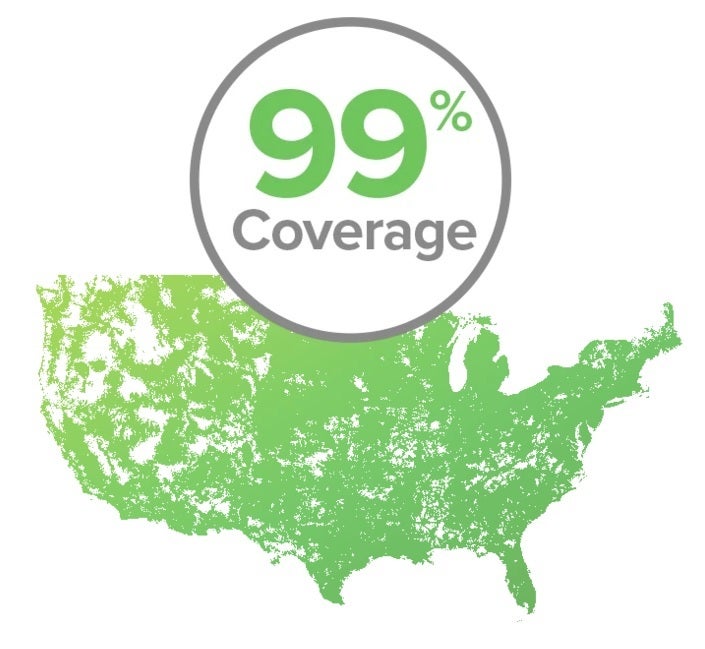Dish acquires another carrier to add potential 5G subscribers

In order to get regulatory approval for its $26.5 billion purchase of Sprint, T-Mobile agreed to work out a deal that replaced Sprint as the "fourth nationwide facilities-based network competitor" with Dish Network. That is a fancy way of saying that instead of cutting the number of major wireless providers by 25%, the T-Mobile acquisition of Sprint would result in no change to the number of large major wireless carriers dotting the country from coast to coast.
Under the terms of the deal, Dish acquired Sprint's pre-paid businesses including Boost Mobile, 9.3 million subscribers, 400 employees and 7,500 stores. And so that it could start offering wireless service before its standalone 5G networks are complete, Dish entered into a seven-year MVNO contract with T-Mobile. As a result, Dish uses T-Mobile's networks to offer service to customers while it builds its own network. An MVNO is a Mobile Virtual Network Operator and in the case of Dish, it buys wireless service from T-Mobile at a low price, and sells it to the public at a higher price. It is a way for the satellite television content provider to gain loyal customers and collect revenue in an attempt to build momentum. However, Dish was actually losing customers during the second half of last year. As of the end of 2020, Dish had 9.055 million wireless subscribers. That was after a loss of 212,000 wireless customers in Q3 and 363,000 subscribers in Q4.
Today, Dish announced an acquisition of its own by purchasing Republic Wireless. Right off the bat, this is a good fit since the latter is also a T-Mobile MVNO. When the deal closes, Dish will obtain 200,000 wireless customers, the Republic Wireless brand, and associated assets. Dish says that current Republic customers will not experience any changes to their service. The price of the acquisition has not been announced. The acquisition adds more possible 5G subscribers for Dish which hopes to start offering 5G service later this year.
Dish Network buys Republic Wireless
John Swieringa, group president, Retail Wireless and Dish COO said, "Republic has created a loyal following and established a brand known for innovation, customer service and value. We plan to build upon that strong foundation. As we continue to grow our retail wireless business, Republic broadens our existing customer base and positions us to deliver even more value to the market, expanding our portfolio of mobile solutions to meet a variety of customer needs. We look forward to welcoming Republic customers to the Dish family."

Republic Wireless has an MVNO deal with T-Mobile allowing it to cover most of the country
Not included in the deal is the Relay division of Republic Wireless which will remain a standalone business and expects to become a wholesale customer for Dish's 5G network. The Relay division "provides communication and productivity solutions for frontline teams in hospitality, facilities management, manufacturing, healthcare and education, and will remain headquartered in Raleigh, NC."
The deal still needs to pass regulatory scrutiny and is subject to the usual closing conditions. The transaction should close next quarter which runs from April through June. Republic Wireless was formed in 2011 offering "wireless service the way it should be." Dish characterizes its new acquisition as being a customer-centric carrier known for its "simple, affordable service."
T-Mobile's purchase of Sprint was all about its desire to buy the latter's hoard of 2.5GHz mid-band spectrum. Traveling further than high-band mmWave spectrum and faster than low-band airwaves, many analysts call mid-band spectrum the most important part of a 5G network. The FCC recently auctioned off mid-band spectrum in the C-band and generated a record breaking $81 billion in bids for licenses. Verizon and AT&T together spent over $68 billion in the auction. T-Mobile, which already has the mid-band spectrum it acquired in the Sprint deal, bid only $9 billion. The amount of money bid indicates the importance of owning mid-band spectrum and confirms that T-Mobile's triple layer cake approach to 5G (mmWave for fast download data speed, low-band to cover the country, mid-band for the best of low and high-band characteristics) is the best way to build a 5G network.
Follow us on Google News












Things that are NOT allowed:
To help keep our community safe and free from spam, we apply temporary limits to newly created accounts: